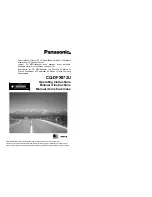
HE4000 Encoding System
Troubleshooting
All current faults are recorded in the fault history log; however, not all
faults that are detected by the HE4000 are shown on the current faults
log. To determine if other hardware or operational problems exist, the
fault history log must be viewed.
6.4 Viewing Current Faults Using a Remote Device
To view current faults using a remote unit, issue the
FM CURR_LIST
command. The HE4000
responds with either No Faults, if none are present, or one or more fault messages.
For example, to view current faults, issue the
FM CURR_LIST
command. The remote unit
displays:
Current Faults (LIST)
16:25:43 08/21/2001
----------------------------------------------------
PHYS.A DS3 Red Indicator
The query response shows:
•
The type of information queried —
current faults
•
The time the query was issued —
16:25:43
•
The day the query was issued —
08/21/2003
•
A listing of all current faults
Individual faults do not include a time tag since they were occurring at the time the query was
issued, in this example at 16:25:43 on 08/21/2003.
To determine the time that the fault initially occurred, you must query the fault history log. For
example, the red indicator could have occurred prior to 16:25:43 on this day.
6.5 Fault History Log
The fault history log is more than just a list of current faults that have occurred over a period of
time. The HE4000 can detect a variety of other hardware and operational faults that are not
reported as current faults. These faults are stored in the fault history log in addition to any current
faults that have occurred.
The HE4000 fault history log records up to 20 repeated occurrences of the same fault condition.
The HE4000 stops logging faults after they occur more than 20 times. The HE4000 saves all
faults in the fault history log until the fault history log is cleared by selecting Clear from the Faults
submenu or issuing the remote command
FM LOG_CLR
.
01-0951-404 Rev B
6-3















































